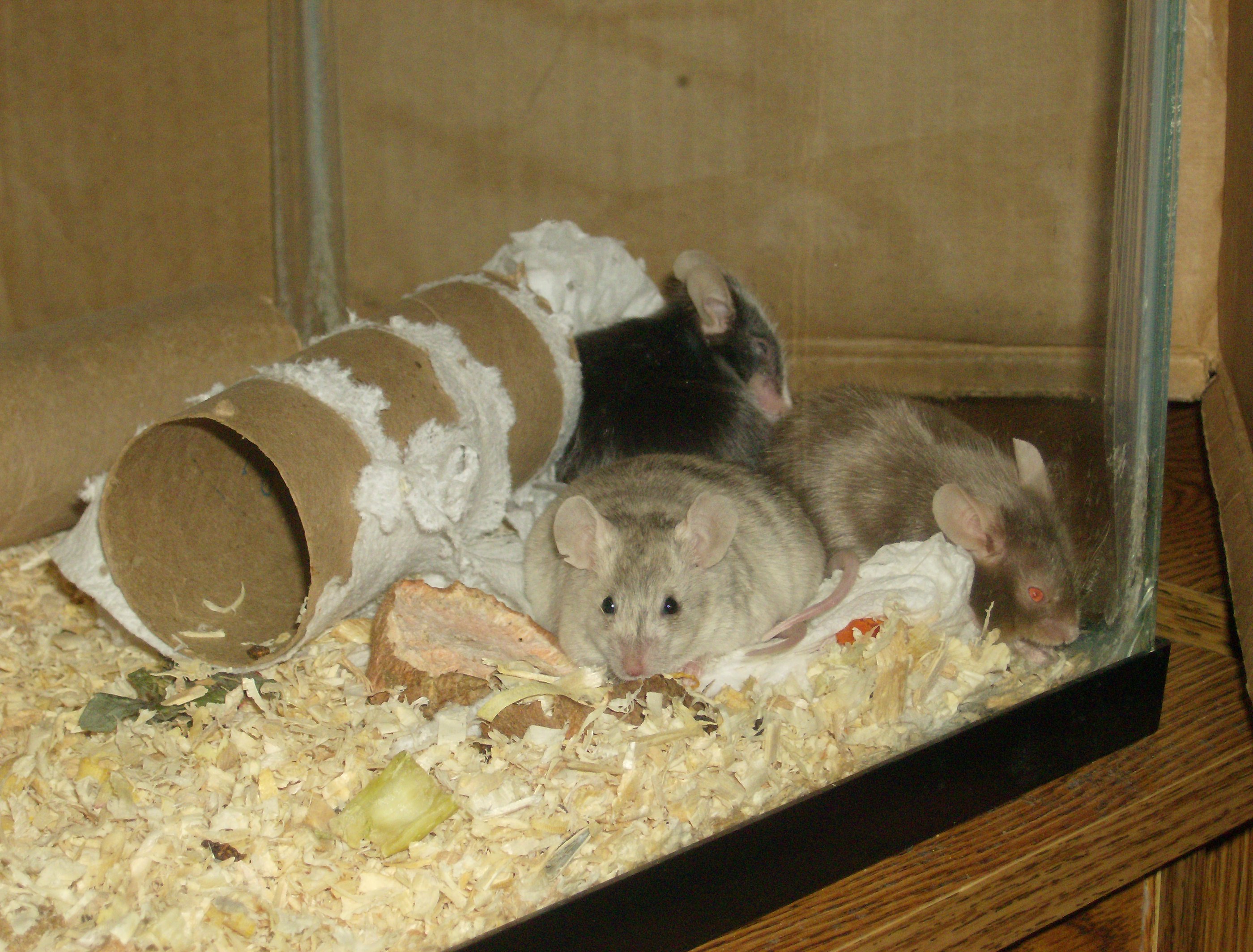All mice from Mrs. Beach's Brindle Empire have been trained to:
- Recognize their names
- "Come with me!"
- "Safe and Still"
- Enjoy praise and strokes
- "There you go!"
- "Go home!"
RECOGNIZE THEIR NAMES
Open the cage lid slowly and quietly. Call your mouse's name. It should stick it's
head out of wherever it is, or turn its head or nose towards you if it's out in the open. Always say the mouse's name before you give it a command.
"COME WITH ME!"
To pick up your mouse, open the cage lid slowly and quietly. Put your hands in
slowly. When you approach the mouse, make a noise in the litter so it knows you're there. Put both hands palm up down on the bottom of the cage surrounding the
mouse and say, "Come with me!" Give the mouse time to check you out. It will most probably walk onto your hands. If it does not, say "Come with me!" again and move
your hands together so the mouse has to stand on them.
"SAFE AND STILL"
If your mouse is frightened while on your palm, cup the other hand over it and say,
"Safe and Still", and wait until the mouse is calmer. If walking with the mouse, put it
into "Safe and Still" and say, "Safe and Still. Come with me!" This way it knows that
even though everything is moving, it's OK. Eventually all you will need to do is say,
"Safe and still," and your mouse will relax.
ENJOY PRAISE AND STROKES
After your mouse has successfully come with you, stroke it gently with the flat of
your hand or rub it gently with your fingertip. Call its name and tell it its a good
mouse. A little praise goes a long way towards making your mouse want to come
with you the next time.
"THERE YOU GO!"
When you want your mouse to walk off your hand onto something, tilt your hand
slightly towards where you want it to go and tell it, "There you go!" Again, give your mouse time to check out where it will be going. Mice sometimes refuse "There you go!"
if where you want them to go is cold or not soft or doesn't smell right, so respect your mouse if it doesn't want to go. I use "There you go!" for putting a mouse on my
shoulder, in my pocket, moving it to my other hand, or getting it to walk onto someone else's hand. There are lots of other ways to use it.
When it's time to put your mouse back in its cage, offer your flat hand, palm up, to
the mouse to crawl onto and say, "Go home?" With a question mark, which means
an upward vocal inflection. Your mouse will willingly walk onto your hand if it is ready
to go home. Repeat the question, "Go home?", as you walk towards the cage and
until you have lowered your hand to the floor of its tank. This assures the mouse
that even though it is moving through space, it will be going back home. Then you
say, "Go home!", with a downward vocal inflection, so it knows it's OK to step off your hand. Mice can see only an inch or two and can sometimes begin to step off your
hand before you get it to the cage. That's why you repeat, "Go home?" while they're
still in motion. The "Go home!" with the downward vocal inflection tells them it's safe
to step off your hand.
GIVING DIFFERENT COMMANDS TO DIFFERENT MICE AT THE SAME TIME
Because the mice know their names, with this system it is possible for you, while
holding two mice in one hand, to get one to walk onto your other hand to go home
and the other one to crawl onto your shoulder. Hold out your other hand and say,
"Mouse A, go home?" Mouse A goes onto your other hand. Put your hand with
Mouse B on it near your shoulder and say, "Mouse B, there you go!" It's a very convenient system. It's all about letting the mice know what to expect.
DISCLAIMER
Please realize that if the mice are frightened or not used to you, if you don't give
them enough time, if you usually communicate with them a different way or a way
that is scary to them, or if there are extra people or animals or noise in the room,
they may not follow their training. (Mice will bite only when they are really scared.
Neither Mrs. Beach nor her alter ego, Ann Marlowe, can be held liable for injuries caused by unpredictable animal behavior.)
A young Mrs. Beach, happy with food and friends (Possum, above, and Mouse, right).
